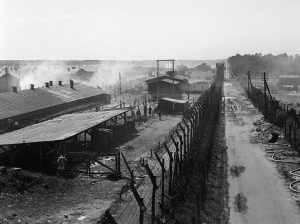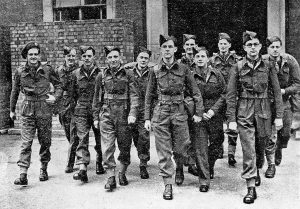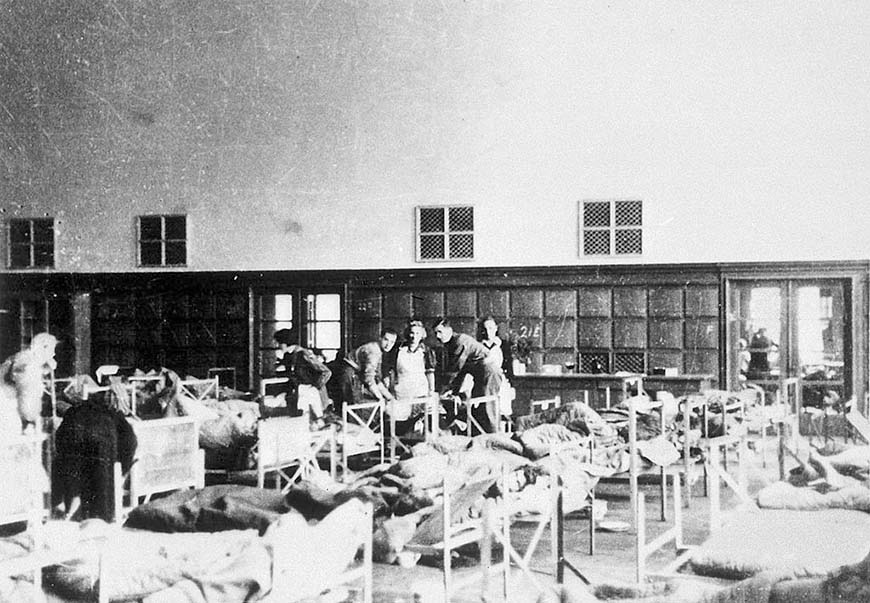It was early April 1945 when the call went out for student volunteers at London’s medical schools.
Though World War II was drawing to a close, Europe was in ruins after six years of conflict. The British Army desperately needed extra hands when it came to dealing with widespread public health issues within devastated populaces.
According to records from London’s Imperial College, 96 volunteers were told they were heading to Holland, where locals were starving due to Germans cutting off food and fuel supplies.
At the last minute, an urgent request came through for extra medical support, from Lower Saxony. The 11th Armored Division had just liberated a Nazi ‘camp’ outside the town of Belsen.
I think understanding their sacrifice, understanding their willingness to get involved and to contribute is a real hallmark of medicine.
Filmed and reported on by embedded journalists, the horrors of the Bergen-Belsen concentration camp were among the first many in the world had of the wider Holocaust.
At least 50,000 are likely to have died at the camp, through mistreatment, starvation, and constant outbreaks of disease. Legendary Jewish diarist Anne Frank was one. Czech writer Josef Capek—creator of the word ‘robot’—was another.
For students yet to finish their medical training, the challenge of caring for the survivors was as daunting as it was heartbreaking, but led to one of the most incredible—and rarely recalled—stories of medical assistance in WWII.
“Nothing could prepare them for what they would face, but they acted in the best traditions of the medical profession, and put their patients first,” the Imperial College wrote.
Liberation, and horror
The sight that met British soldiers at Bergen-Belsen on April 15, 1945 was one of true horror.
A typhus outbreak had swept through the overcrowded camp shortly before their arrival, with up to 20,000 likely infected. Hundreds fell by the day.
Travelling with the 11th Armored, the BBC’s Richard Dimbleby brought Bergen-Belsen to life for millions, in one of the war’s most raw, heartbreaking passages of reportage.
“…beyond the barrier was a whirling cloud of dust, the dust of thousands of slowly moving people, laden in itself with the deadly typhus germ,” he reported.

“And with the dust was a smell, sickly and thick, the smell of death and decay of corruption and filth. I passed through the barrier and found myself in the world of a nightmare.”
Along with typhus, cholera, tuberculosis, sores, boils, and gangrene were widespread; all exasperated by overcrowding in the camp’s huts.
Despite few resources, Royal Army Medical Corps staff swung into action. Nearly 80,000 survivors were taken from the camp, while around 23,000 bodies were buried.
Food was acquired for the starving, and limited treatment began for the ill. Incredibly, 14,000 beds were sourced from the surrounding area.
Regardless of the RAMC’s work, around 500 people were still dying, every day. More help was needed.
Dick Everett, one of 11 volunteers from Westminster Medical School, was one of the reinforcements. Though he has since died, Dr. Chris Everett, a cousin, kept his diary, and has performed extensive research on the med students of Bergen-Belsen.
“Dick saw the request for volunteers, along with many others, and put his name on the medical school notice board,” he told the Imperial College.
“They were going to Holland. The plan was to help the starving people and get them eating again. It’s very difficult after you’ve been chronically starved.”
The response to the call for student volunteers was so impressive that a ballot system had to be used to decide on the group.
Arrival of the med students
Led by acclaimed British nutritionist Arnold Peter Meiklejohn, the first dozen med students arrived in Bergen-Belsen on May 2. Others joined shortly after.
In a BBC report this April, the diary of John Reynolds, then a 23-year-old student at St Thomas’s medical school, described the scene.
We have not got enough time to examine each patient fully and yet there is too much time to do just symptomatic treatment.
“People in all stages of disease,” Reynolds wrote. “Many were dead. Practically all were emaciated. Nearly all the internees had violent colic or diarrhoea.”
Though typhus was fortunately on the wane by the time they arrived, the students could offer little medical support. Virtually no medicine was available.
After improving living conditions, and providing basic treatment for the suffering, the majority of their attention turned to feeding the former prisoners.
With the right reintroduction of glucose crucial, the reestablishment of a healthy diet for starving patients was as difficult a proposition then as it remains today.
Initially, the students created a “thick gruel made of sugar, dried milk, flour, salt, and water,” of which around a quarter gallon was given to former prisoners.
After some success, the gruel was rejected due to being too sweet, and causing diarrhea. Finally, it was found that diluted soup and glucose drinks “worked best”.
It is impossible to know how many lives were saved because of the 96 English med school volunteers, though it is thought the camp’s death rate halved by the time they left in late May 1945. They were replaced by another group of med students, from Belgium.

“We have not got enough time to examine each patient fully and yet there is too much time to do just symptomatic treatment,” Michael Hargrave, a student, wrote of the camp’s final state.
“… one thing is certain however, and that is that all the patients are looking much better, and are stronger though they are still phenomenally thin.”
“We regret but the cause”
Despite the horrors they witnessed, the students were thrown straight back into medical school. Some—like forensic psychiatrist David Westbury and neuro-radiologist Thomas Hawkins—would become well-known in British medical circles.
Bergen-Belsen stayed with them. Two students returned to the United Kingdom with tuberculosis, while seven had typhus. Many would suffer from post-traumatic stress disorder over the coming years.
We shall remember Belsen for many a day, not only for its vileness, but also for the many lessons it had to teach us.
“I think understanding their sacrifice, understanding their willingness to get involved and to contribute is a real hallmark of medicine,” Professor Stephen Challacombe, a medical historian and oral medicine professor at King’s College, told the BBC.
“I think there’s a lesson for me in helping people to understand you can attain those pinnacles and you can contribute, everybody can contribute however insecure they feel at the time.”
“This is our story, or part of it,” Gerald Raperport, a Bergen-Belsen med student from Middlesex, later wrote.
“We shall remember Belsen for many a day, not only for its vileness, but also for the many lessons it had to teach us; for the comradeship and team spirit we found among all with whom we came in contact; for the hardest and most worthwhile month’s work of our lives.
“It was an invaluable experience and none of us regret the time spent there. We regret but the cause.”



